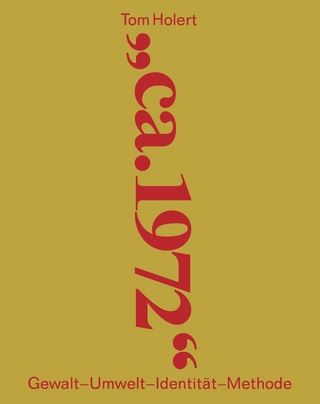
#iranelection
Stanford University Press (Verlag)
978-0-8047-9587-6 (ISBN)
The protests following Iran's fraudulent 2009 Presidential election took the world by storm. As the Green Revolution gained protestors in the Iranian streets, #iranelection became the first long-trending international hashtag. Texts, images, videos, audio recordings, and links connected protestors on the ground and netizens online, all simultaneously transmitting and living a shared international experience.
#iranelection follows the protest movement, on the ground and online, to investigate how emerging social media platforms developed international solidarity. The 2009 protests in Iran were the first revolts to be catapulted onto the global stage by social media, just as the 1979 Iranian Revolution was agitated by cassette tapes. And as the world turned to social media platforms to understand the events on the ground, social media platforms also adapted and developed to accommodate this global activism. Provocative and eye-opening, #iranelection reveals the new online ecology of social protest and offers a prehistory, of sorts, of the uses of hashtags and trending topics, selfies and avatar activism, and citizen journalism and YouTube mashups.
Negar Mottahedeh is Associate Professor in Literature and Women's Studies at Duke University. She is the author of Displaced Allegories: Post-Revolutionary Iranian Cinema (2008) and Representing the Unpresentable: Historical Images of National Reform from the Qajars to the Islamic Republic of Iran (2007).
Contents and Abstracts1Hashtag chapter abstractThe citizen journalist was born out of the glitchy screens of mainstream reporting. On Twitter, the hashtag #CNNfail represented one of these glitches. When netizens tweeted the hashtag #cnnfail alongside the hashtag #iranelection in the first days of the uprising in Iran in 2009, it was to emphasize CNN's failure to report a collective act of dissent, in favor of corporate bankruptcy news in the US. Iran was jamming foreign satellite broadcasts along the length of the satellite's footprint. State television too was co-opted into covering up the people's uprising and was broadcasting programming that would lull the citizenry. This called for a response by those who were witnessing the unfolding events. From amidst the masses in the boulevards and squares of the Iranian cityscapes Iranians uploaded videos and images to Twitter, Facebook and YouTube. This moment marked the birth of the citizen journalist. The hashtag became its slogan.
2Meme chapter abstractIn tracing the campaigns of the Iranian election uprising, this chapter recalls how bodies and social media handles effectively became memes, viral transmitters of sensory experiences and actions that in their simultaneous expression around a long trending hashtag, fundamentally changed the function and purpose of online media platforms as they transformed the spaces they moved through. The Iranian post-election crisis was in many ways a citation of the Iranian revolution and an attempt to reverse its losses. The chapter thus also chronicles the related history of the 1978 Iranian Revolution and traces the technologies and slogans that were used during its course. The chapter argues that the digital Web 2.0 technology in the Iranian election crisis memed the ways that technology was used in the Iranian Revolution, tethered this time, to horizontal networks of many-to-many transmission that awakened the world to the possibilities of collective action online.
3Selfie chapter abstractThe Iranian crisis of 2009 "memed" the content and operations of other uprisings in modern Iranian history: the demonstrations for the nationalization of oil in 1951, the marches against the CIA coup in1953, and the Iranian Revolution of 1978. Focusing on the role of women and the visual representation of women bodies at the forefront of these uprisings, the chapter discusses the gains and losses of the Iranian women's movement following its participations in the Iranian Revolution of 1978. Studying the role of the camera lens and its logics in relation to the representation of women in revolt, the chapter suggests that the solidarities configured by the lens and framing of the digital camera in the context of contemporary networked protests are transmitters of a global solidarity formed on the networks of the web and symptomatic of a melancholic failure to reclaim the fundamental loss of human solidarity under capitalism.
| Erscheint lt. Verlag | 15.7.2015 |
|---|---|
| Zusatzinfo | 28 halftones |
| Verlagsort | Palo Alto |
| Sprache | englisch |
| Maße | 127 x 203 mm |
| Gewicht | 318 g |
| Themenwelt | Geschichte ► Allgemeine Geschichte ► Zeitgeschichte |
| Geisteswissenschaften ► Geschichte ► Regional- / Ländergeschichte | |
| Sozialwissenschaften ► Kommunikation / Medien ► Medienwissenschaft | |
| Sozialwissenschaften ► Politik / Verwaltung ► Staat / Verwaltung | |
| ISBN-10 | 0-8047-9587-8 / 0804795878 |
| ISBN-13 | 978-0-8047-9587-6 / 9780804795876 |
| Zustand | Neuware |
| Haben Sie eine Frage zum Produkt? |
aus dem Bereich


